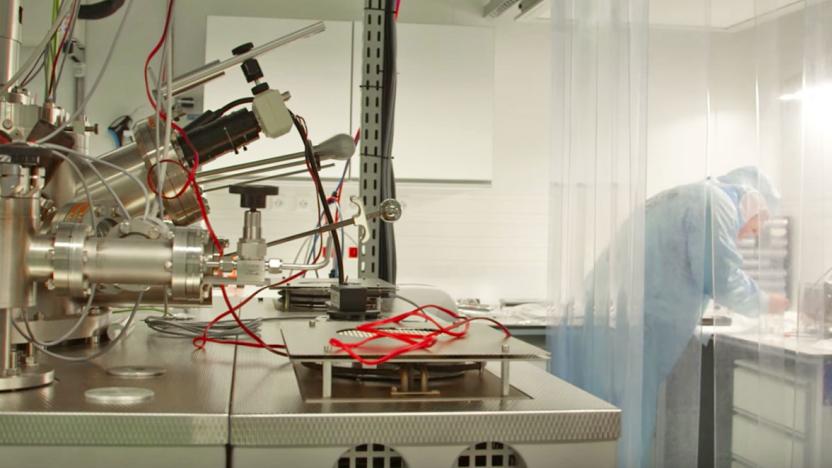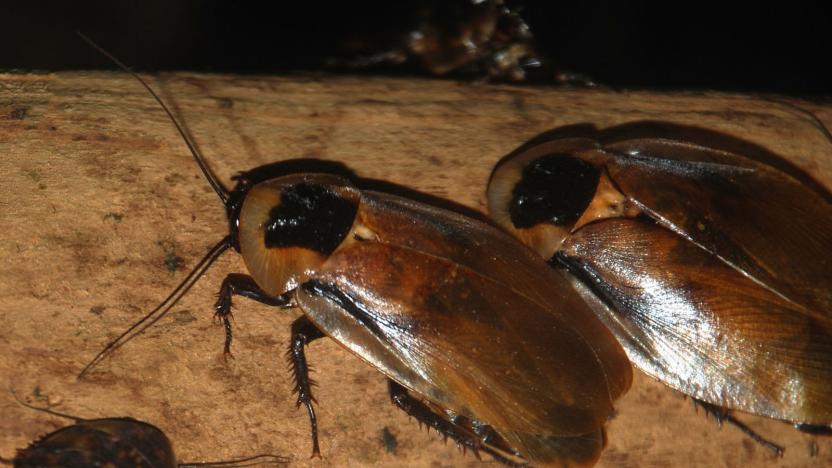nanomachines
Latest

Prepare for the world's first nanocar race this month
Nanotechnology is fascinating, but for most people who aren't full-time chemists, it's a ridiculously dense field of study. An international team of scientists are trying to make nanotechnology more accessible to the public with the world's first nanocar race, scheduled to start on April 28th in the French city of Toulouse. Six teams hailing from three continents will gather at the Centre for Materials Elaboration and Structural Studies and attempt to jolt their custom nanocars across a polished gold track 100 nanometers in length (roughly one-thousandth the width of a human hair).

Nanomachines just won the Nobel Prize in Chemistry
If you want to know how far nanotechnology has come, you only need to ask the Royal Swedish Academy of Sciences. It just awarded the Nobel Prize in Chemistry to researchers Bernard Feringa, Jean-Pierre Sauvage and Sir J. Fraser Stoddart for their work on the "design and synthesis of molecular machines." All three have been instrumental to making nanomachines possible. Sauvage kicked things off in 1983, when he linked ring-shaped through a mechanical bond instead of the usual electron-sharing bond. Stoddart carried the torch when he slipped a moving molecular ring on to an axle in 1991, while Feringa built the first molecular motor in 1999.

Mind-controlled nanobots release drugs inside cockroaches
Stay with me here -- scientists from Bar-Ilan University and the Interdisciplinary Center in Israel created nanobots, injected them into cockroaches, and released fluorescent drugs into the insects using mind power. While that sounds insanely convoluted, the aim is to actually help humans. If a schizophrenia patient is about to have a violent episode, for instance, an EEG could trigger the release of powerful drugs. That way, they'd only get them when needed, minimizing harmful side effects.

Researchers take nanocars out for an open-air test drive
Nanocars, those molecular-scale vehicles that might one day carry around tiny payloads, have been zipping around in vacuum environments for awhile now. But one breakthrough the nanocar researchers at Rice University have been searching for is the ability to operate these nanomachines in ambient, open environments.

Nano-machines built to mimic human muscle could help power cyborgs, keep the OSI budget down
At today's prices, building a Six Million Dollar Man would cost around $31 million. Of course, being a TV show means the Office of Scientific Intelligence doesn't have too many bionic employees, but that might not the case in the future. Nicolas Giuseppone and a team at the Université de Strasbourg and CNRS have created thousands of nano-machines to replicate the movement of human muscle fibers. Weaving them all together, the machines are able to make a coordinated contraction movement that stretches and contracts. For the moment, the supramolecular polymers can only stretch a matter of micrometers, but in the future they could be used to create artificial muscles, small robots or even materials that can move. Hopefully it'll also give us the power to leap tall buildings, so we'll be outside practicing our sound effects.

Microscopic wheel will spin straight to your heart, literally
Sure, you've got an iPod Nano in your pocket and a VIA Nano in your custom PC, but we're willing to bet you don't have any nanomachines in your arteries at the moment. Two scientists from the Universities of Sheffield and Barcelona, Ramin Golestanian and Pietro Tierno, hope to change that by turning your bodily fluids into pathways for their tiny devices. The things are comprised of two beads, measuring 1 and 3 micrometers, attached to each other using strands of DNA. A magnetic field gets 'em spinning in the right direction and the increased surface area of the larger bead moves the contraption forward at a blistering 1 micrometer per second (shown in a short but sweet video below). Now, if the good doctors could just build 11 of these things and get them in a 4-3-3 formation we'd finally know where to place our money for next year's nanosoccer RoboCup Open.[Via Scotsman.com]

Edinburgh scientists craft microscopic nanomachines
There's apparently a good bit of conflict at the University of Edinburgh, as we've got one esteemed fellow claiming that nanotech products are potentially dangerous, and now we've got a professor of chemistry insinuating that his nanomachines can change the world. Regardless of their personal differences, David Leigh has borrowed an idea from 1867 in crafting "a minuscule motor that could lead to the creation of microscopic nanomachines," and while he credits the "Maxwell's Demon" as its inspiration, he hopes these plans will actually lead to something substantial. The bantam motor is entirely solar-powered, and has been "devised to trap molecules as they move in a certain direction under their natural motion." Preliminary tests have shown a nanomachine moving a drop of water uphill by using molecular force, which gives researchers hope that this discovery will allow these diminutive machines to "do things that are much closer to what biological machines do." Of course, even Mr. Leigh admits that predicting just how this can or will effect society is difficult, but considering that he's aiming to to bring things that "could happen in a Harry Potter film" to fruition, we won't count him out just yet.





